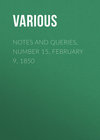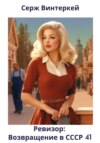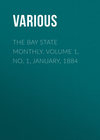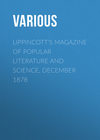Czytaj książkę: «Notes and Queries, Number 15, February 9, 1850»
NOTES
WAGES IN 17TH AND 19TH CENTURIES
Running my eye accidentally through the household book of Sir Roger Twysden, from 1659 to 1670, it occurred to me to make a comparison between the relative prices of meat and wages, as there given, in order to ascertain the position of our peasantry in these parts, at the close of the 17th century. I send you a few extracts, by which it will be seen that, in Kent, at least, our agricultural labourers appear to have been in far better condition than those of the rest of England, who, in Mr. Macaulay’s brilliant work, are represented as living “almost entirely on rye, barley, and oats,” owing to the exorbitantly high price of meat, as compared with the ordinary scale of wages.
As to meat, I find the following entries:—

Through this period we have:—
“Cheese per load, i.e. 56 lb., at 14s., 11s., 10s., 4d., 9s. 6d.”
The wages of labourers through the same period are entered:—

A reference to the household-books of the Derings, in East Kent, gives the same results.
The wages given by Sir Roger Twysden to his household servants at this time were:—

{226}
I have added, in most instances, the prices now paid to labourers in these parts, having obtained my information from the farmers of the neighbourhood.
The price of butchers’ meat at present, in this neighbourhood, is from 6d. to 7 1/2d. per lb.; by wholesale, 3s. 6d. or 3s. 8d. per stone.
As far, then, as the relative prices of wages and meat can guide us, the labourer, in these parts, was as well able to purchase meat in 1670 as he is now.
Unhappily for him, the imprudence of early marriage entailing upon him the charge of a family, he is precluded from the indulgence in fresh meat, except as an occasional treat. Cheese and bacon, however, are still within his reach. The improvidence of early marriage rarely occurred in former days, and palpably, if our Kentish labourers lived entirely on oats and rye, it was not of necessity that they did so. I am inclined to think that, in many of the instances given above, especially in haying and harvest, provisions of some sort were found by the employer, over and above the wages. When I have more leisure, I will endeavour to obtain correct information on this point; and meanwhile, send you the entries just as I find them. I observe an entry of “peas to boil for the men.” They had porridge then, at all events, in addition to their wages; and these wages, if they had so chosen, could further have purchased them meat, quite as well as at the present day; though, alas for our poor peasantry, this is not saying much for them; and even of that little smack of meat they will soon be debarred, if the present system—but I am intruding on sacred ground, and must leave the poor fellows to their hard work and scanty meals.
LAMBERT B. LARKING.
MARLOWE AND THE OLD “TAMING OF A SHREW.”
I regret that my communication (No. 13. p. 194.), on the subject of the authorship of The Taming of a Shrew, was too late to be of any avail for the already-published new edition of Marlowe’s works; and, had I been aware of such being the case, I should have waited until I had had an opportunity of seeing a work whose editor may entertain views in ignorance of which, to my disadvantage, I am still writing. It is, perhaps, a still greater disadvantage that I should appear to depend for proofs upon a bare enumeration of parallel passages; when I know that the space I should require for the purposes of stating the case fully and fairly, and, as I think, conclusively, would be utterly inconsistent with that brevity which must be with you an essential condition; while, at the same time, I know of no medium through which I am so likely to enlist the attention of a “fit audience” as your publication. Premising that my references are to The Taming of a Shrew in “Six Old Plays,” 1799, and to Marlowe’s Works, edit. 1826, I proceed to indicate such passages as a rapid glance through the respective works, aided by some previous acquaintance with the subject, and a not very bad memory, furnished. Some of the parallels will be found identical; in others, the metaphors will be found to be the same, with the expression more or less varied; and in others, again, particular expressions are the same, though the tenor of the phrase be different. It will be observed that the quotations of Marlowe are exclusively from Dr. Faustus and Tamburlaine. Of the longer passages I have given merely the first line for reference; and I have numbered them for the convenience of comparison:—
THE TAMING OF A SHREW

MARLOWE

Leaving the question in this position for the present, I shall be glad of such information from any of your readers as may tend to throw a light on the date of Shakspeare’s Taming of the Shrew. I find Mr. Collier’s opinion expressed in the following words:—
“The great probability is that Hamlet was written at the earliest in 1601, and the Taming of the Shrew perhaps came from the pen of its author not very long afterwards.”
I am anxious to ascertain whether I am acquainted with all the circumstances on which the above opinion is founded; as those which I can, at this moment, recall, are to my mind hardly sufficiently conclusive. Rejecting the supposed allusion to Heywood’s Woman Kill’d with Kindness, which I see, by a note, Mr. Collier gives up as untenable ground, the facts, I believe, remain as follows:—
First: The Taming of the Shrew was not mentioned by Meres in 1598, whereupon it is assumed that “had it been written, he could scarcely have failed to mention it.” And,
Second: it must have been written after Hamlet, because the name Baptista, used incorrectly in that play as a feminine name, is properly applied to a man in this. And these, I believe, are all. Now, the first of these assumptions I answer, by asking, “Does it follow?” Of all Shakspeare’s plays which had then appeared, only three had been published before 1598, and not one comedy. Meres, in all probability, had no list to refer to, nor was he making one: he simply adduced, in evidence of his assertion of Shakspeare’s excellence, both in tragedy and comedy, such plays of both kinds as he could recollect, or the best of those which he did recollect. Let us put the case home; not in reference to any modern dramatist (though Shakspeare in his own day was not the great exception that he stands with us), but to the world-honoured poet himself, who has founded a sort of religion in us: I, for my part, would not be bound not to omit, in a hasty enumeration, and having no books to refer to, more important works than the Taming of the Shrew. In short, the omission by Meres proves no more than that he either did not think of the play, or did not think it necessary to mention it. To the second assumption, I answer that the date of the first Hamlet is “not proven:” it may have been an early play. From the play of Hamlet, in its earlier form, is the name Baptiste, where it is used in conjunction with Albertus, taken; the scene mentioned is Guiana; and there is nothing to lead one to suppose that the name is used as an Italian name at all. Both the date of Hamlet, therefore, and—whichever way decided—the conclusion drawn from the supposed mistake, I regard as open questions. There is yet another circumstance which Mr. Collier thinks may strengthen his conclusion with regard to the date of this play. He refers to the production of Dekker’s Medicine for a Curst Wife, which he thinks was a revival of the old Taming of a Shrew, brought out as a rival to Shakspeare’s play. This is easily answered. In the first place, Katharine, the Shrew, is not a “curst wife:” she becomes a wife, it is true, in the course of the play; but this is a part of the process of taming her. But what seems at once to disprove it is, that, according to Henslow’s account, Dekker was paid 10l. 10s. for the piece in question; as Mr. Collier observes, an “unusually large sum” for a new piece, and not likely to be paid for the bashing up of an old one. I am thus left entirely without a clue, derivable from external evidence, to the date of this play; and shall be glad to know if there is any thing, throwing light upon the point, which I may have overlooked. That more important consequences are involved in this question than appear upon the face of it, I think I shall be able to show in a future communication; and this is my excuse for trespassing so much upon your space and your readers’ patience.
SAMUEL HICKSON.
St. John’s Wood, Jan. 26. 1850.
NOTES FROM FLY-LEAVES, NO. 6
In a copy of Burnet’s Telluris Theoria Sacra (in Latin), containing only the two first books (1 vol. 4to., Lond. 1689), there is the following entry in Bishop Jebb’s hand-writing:—
“From the internal evidence, not only of additional matter in the margin of this copy, but of frequent erasures and substitutions, I was led to suppose it was the author’s copy, illustrated by his own annotations and improvements. The supposition is, perhaps, sufficiently corroborated by the following extract from the Biographia Britannica, vol. iii. p. 18.
“‘It seems it was usual with Dr. Burnet, before he published any thing in Latin, to have two or three copies, and no more, printed off, which he kept by him for some time, in order to revise at leisure what he had written currente calamo, and sometimes, when he thought proper, to be communicated to his particular friends for their opinions, &c.’
“This copy, as it does not differ from any of the editions of 1689, was certainly not one of those proofs. But the Doctor’s habit of annotating on his own Latin books after they were printed, renders it extremely probable that this book was a preparation for a new edition. It would be well to compare it with the English translation.”
The nature of many of the corrections and additions (which are very numerous), evidently shows a preparation for the press. I have compared this copy with the English edition, published in the same year, and find that some of the corrections were adopted; this, however, but in a few instances, while in one, to be mentioned presently, a palpable mistake, corrected in the MS. Latin notes, stands in the translation. The English version differs very materially from the Latin. The author says in his Preface:—
“This English version is the same in substance with the Latin, though I confess, ’tis not so properly a translation, as a new composition upon the same ground, there being several additional chapters in it, and several new moulded.”
The following are examples of corrections being adopted: P. 6. Latin ed. “Quod abunde probabitur in principio libri secundi.” For the last word subsequentis is substituted, and the English has following. P. 35. “Hippolitus” is added to the authorities in the MS.; and in the English, p. 36., “Anastasius Sinaiti, S. Gaudentius, Q. Julius Hilarius, Isidorus Hispalensis, and Cassiodorus,” are inserted after Lactantius, in both. P. 37. “Johannes Damascenus” is added after St. Augustin in both. P. 180. a clause is added which seems to have suggested the sentence beginning, “Thus we have discharged our promise,” &c. But, on the other hand, in p. 8. the allusion to the “Orphics,” which is struck out in the Latin, is retained in the English; and in the latter there is no notice taken of “Empedocles,” which is inserted in the margin of the Latin. In p. 11. “Ratio naturalis” is personified, and governs the verb vidit, which is repeated several times. This is changed by the corrector into vidimus; but in the English passage, though varying much from the Latin, the personification is retained. In p. 58., “Dion Cassius” is corrected to “Xiphilinus;” but the mistake is preserved in the English version.
JOHN JEBB.




















